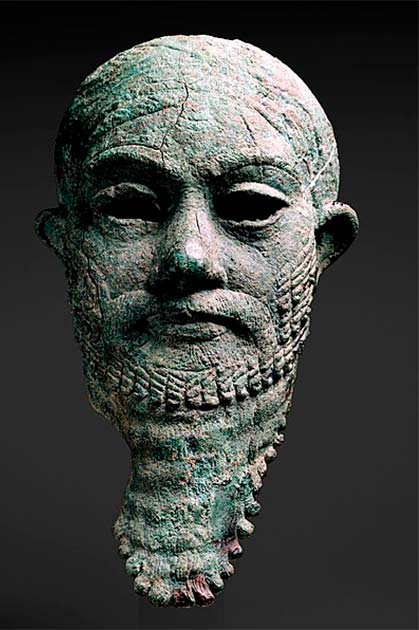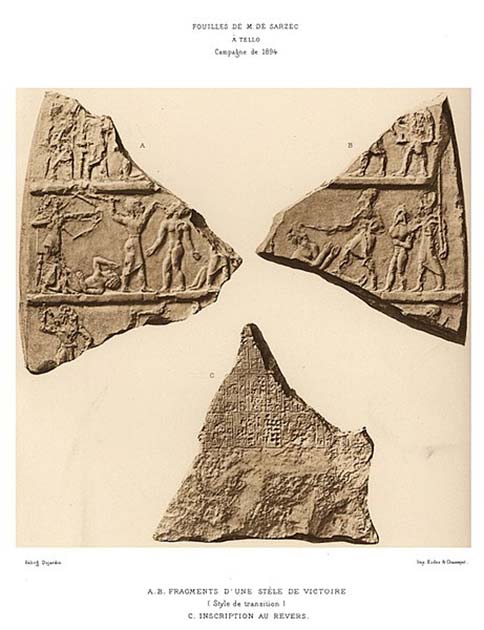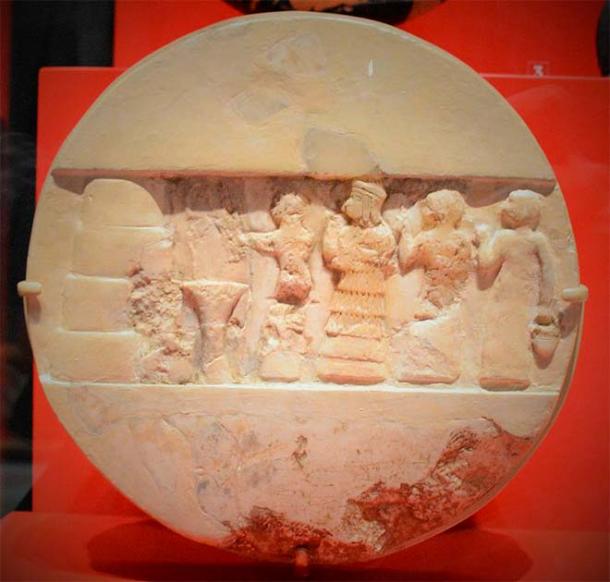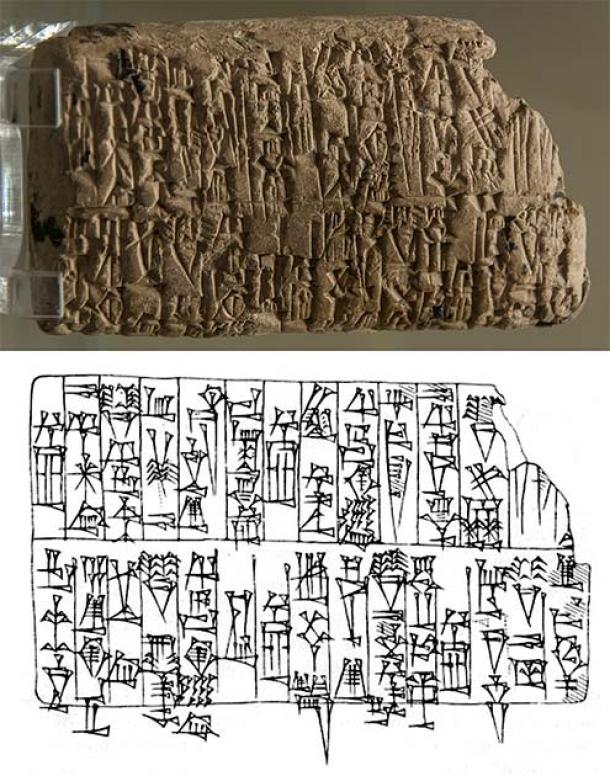
Rimush of Akkad, Sargon’s Heir, and a Brutal Warlord
In the history of Ancient Mesopotamia, that renowned cradle of human civilization, there were many great kingdoms, city-states, and even empires. One of these was the famed Akkadian Empire, centered on the city of Akkad. Reaching its peak strength between 24th and 22nd centuries BC, this affluent ancient empire exercised immense influence across Mesopotamia, and as far as the Levant, Anatolia, and far south to Dilmun and Magan (modern Saudi Arabia, Bahrain, and Oman). To survive, such an empire needed powerful leaders. And one of them was Rimush of Akkad. Here is his story.
Rimush of Akkad Follows in Great Footsteps
Rimush of Akkad, also known as Rimuš, was an ancient Mesopotamian king who reigned over the Akkadian Empire during the Early Bronze Age. While there is limited historical information available about Rimush, he is considered an important figure in the history of Akkad. He was the son of the legendary Sargon of Akkad, possibly the first ever person to rule over an empire. After his major conquest of the Sumerian city-states, Sargon sat at the head of the richest and most powerful realm at the time. And when it was time for succession, it was his eldest son, Rimush that would sit on the throne. His reign is estimated to have occurred around 2278-2270 BC, though the exact dates are uncertain.

Ruler Rimush of Akkad, c. 2300–2000 BC. (Metropolitan Museum of Art/CC0)
While the specific details of Rimush's early reign are not extensively documented, it is believed that he faced various challenges and had significant accomplishments during this period. Like any new ruler, he likely faced the task of consolidating his power and asserting his authority over the empire. This would have involved securing the loyalty of regional governors and maintaining control over conquered territories. Rimush also continued the military campaigns initiated by his father, expanding the boundaries of the Akkadian Empire. His early reign likely saw further expeditions and conquests to subdue and incorporate neighboring city-states and regions into his empire.
From the start, Rimush was faced with major tasks. The Akkadian Empire was built upon conquered city-states of the region. Many of them didn’t want to stay conquered. So, they rebelled. Surviving inscriptions tell us how he faced numerous revolts, and had to reconquer cities such as Ur, Kazallu, Lagash, Der, Adab, and Umma.
"Rimuš, king of the world, in battle over Adab and Zabalam was victorious, and 15,718 men he struck down, and 14,576 captives he took. Further, Meskigala, governor of Adab, he captured, and Lugalgalzu, governor of Zabalam, he captured. Their cities he conquered, and their walls he destroyed. Further, from their two cities many men he expelled, and to annihilation he consigned them"
“Rīmuš, king of the world, in battle over the cities of Umma and Ki.An was victorious, and 8,900 men he struck down, and 3,480 captives he took. Further, the governor of Umma, he captured, the governor of Ki.An he captured. Further, their cities he conquered, and their walls he destroyed. Further, in their cities 3,600 men he expelled, and to annihilation he consigned them"
- The Iron Army: Assyria - Terrifying Military of the Ancient World - Part I
- The origins of human beings according to ancient Sumerian texts
Continuing His Father’s Legacy
One unique relic from this era survives and provides a critical glimpse into the time of Rimush’s reign. It is known as the Victory Stele of Rimush over Lagash. Consisting of several fragments, it has been attributed to Rimush based on stylistic and epigraphical analysis. One of the fragments mentions both Akkad and Lagash. The stele's style exhibits a light and airy quality, with figures that are more refined compared to those seen during the time of Sargon of Akkad. Notably, a fragment in the main inscription likely contains parts of Rimush's own name.
The stele is believed to depict the conquest of Lagash by the Akkadian troops. The relief on the stele portrays Mesopotamian prisoners, whose execution by Akkadian soldiers aligns with the known accounts of Rimush's actions. Excavated in ancient Girsu, one of the principal cities within the territory of Lagash, the stele's inscription describes the distribution of extensive lands from Lagash to the Akkadian nobility as a result of the victory.

Fragments of the Victory Stele of Rimush. The stele also has an epigraphic fragment, mentioning Akkad and Lagash. It suggests the stele represents the defeat of Lagash by the troops of Akkad. (Public domain)
It wasn’t all about war and destruction however. Even if we know that Rimush totally destroyed the above-mentioned cities, and massacred thousands of their inhabitants, he nevertheless devoted much of his reign to construction of buildings, temples, and monuments. Like his father, Rimush likely undertook various building projects to enhance the prestige of his reign and demonstrate the power and grandeur of the Akkadian Empire. Although specific details are scarce, it is probable that he commissioned construction projects in key cities to showcase his rule. While the extent of Rimush's patronage of the arts and culture is not well-documented, it is reasonable to assume that he continued the tradition of supporting cultural activities and the production of artistic works within the empire.
Enigmatic Circumstances of Rimush’s Demise
Oddly enough, it seems that Rimush was not all that loved in his empire. Not just by his subjects - for whom it would be normal to hate him - but by his nobles and his own people too. History does not remember the exact reasons for this animosity towards Rimush. One interesting inscription from the era shows us that Rimush was even disliked by his own family. This inscription is related to the daughter of Sargon of Akkad, Rimush’s sister - Enheduanna (2285 to 2250 BC). This noble lady was a poet and a high priestess of Goddess Inanna. What is more, she is known as the first known female poet in history.

The "Disk of Enheduanna" at the Penn Museum in Philadelphia, United States. (Mefman00/CC0)
Enheduanna was devoted to her job of a high priestess, and dedicated her entire life to serving Goddess Inanna, the lady of love and fertility. But when Sargon of Akkad died, Rimush was quick to remove her from this position and replace her with a different woman. A surviving poem of Enheduanna shows her plea to the Goddess for the return to her previous position:
“Me who once sat triumphant, he has
Driven out of the sanctuary.
Like a swallow he made me fly from the
window,My life is consumed.
He stripped me of the crown appropriate
for the high priesthood….
It was in your service that I first enteredThe holy temple,
I, Enheduanna, the high priestess.
I carried the ritual basket,
I chanted your praise.
Now I have been cast out to the place of
lepers.
Day comes and brightness is hidden
around me.
Shadows cover the light, drape it in
sandstorms.
My beautiful mouth knows only confusion…”
Why was she cast from her position we do not know. But it is likely that Rimush wanted only his people around him, and perhaps had doubts towards his sister. Either way, we know that he earned widespread animosity, but we simply do not know why. Nevertheless, it is this animosity that ultimately cost him his life. After roughly nine years of reign, Rimush of Akkad was assassinated by his leading nobles. One later inscription, from the 1st millennium BC, tells of the “Omen of king Rimuš, whom his courtiers killed with their seals”. Once Rimush was assassinated and out of the way, he was replaced by his brother, Manishtushu. This new ruler was also assassinated by his own courtiers, 15 years into his reign.
Going Out With a Bang!
In his 3rd regnal year, some six years before his assassination, Rimush made significant achievement, which was - not at all surprisingly - a military undertaking. He waged war against two neighboring realms, Elam and Marhashi, which for centuries stood on the edges of the Mesopotamian world. In a decisive campaign, Rimush displayed the power of his empire, gaining more victories. It is said that in this campaign soldiers of the Indus Valley Civilization fought - indicating early links between Mesopotamia and Ancient India. An inscription commemorates these campaigns.

Account of the victories of Rimush, King of Akkad, Louvre Museum. In several inscriptions, Rimush described his conquest of Elam and Marhashi far to the east of Sumer, even mentioning victories over troops of the Indus Valley civilization. (F. THUREAU-DANGIN/CC BY-SA 4.0)
"Rimuš, the king of the world, in battle over Abalgamash, king of Parahshum (Marhashi), was victorious. And Zahara and Elam and Gupin and Meluḫḫa within Paraḫšum assembled for battle, but he (Rimush) was victorious and struck down 16,212 men and took 4,216 captives. Further, he captured Emahsini, King of Elam, and all the nobles of Elam. Further he captured Sidaga'u the general of Paraḫšum and Sargapi, general of Zahara, in between the cities of Awan and Susa, by the "Middle River". Further a burial mound at the site of the town he heaped up over them. Furthermore, the foundations of Paraḫšum from the country of Elam he tore out, and so Rimuš, king of the world, rules Elam, (as) the god Enlil had shown..."
It is also documented that once he returned from his campaign in Elam, Rimush showed his piety by thanking the God Enlil. He made a lavish offering in the form of “30 mana of gold, 3,600 mana of copper, and 360 slaves.”
As a result of the campaign, the enemies suffered a significant loss. Following Rimush's successful campaigns, his successor Manishtushu established Akkadian Military Governors to rule over Elam, starting with Eshpum. Additionally, an Akkadian Governor named Ilshu-rabi governed Pashime, located on the Iranian coast, during this period.
- Ancient Remains of Important Bronze Age City of the Akkadian Empire Found in Iraq
- A Dusty Demise for the Akkadian Empire (New Study)
An Emperor Lost to History
As we can see, Rimush certainly had achievements to boast of. However, they were not enough to earn him the favor of those around him, and he was in the end killed for it. It is possible that he did not earn their enmity, but was simply assassinated as a result of the power struggles which always accompanied large empires and their rulers. Could it be that his brother ousted him and took his throne? Sadly, we might never know. This is a very distant period of history, and much has been lost to time. Still, Rimush’s military undertakings were enough to carve his name in the annals of history. But even so, he must have had a rather grim reputation, being responsible for brutal deaths of thousands of civilians and soldiers.
In the end, Rimush's legacy, though limited in historical documentation, is significant in the context of the Akkadian Empire and the broader history of Mesopotamia. His reign served as a model for his successors in the Akkadian Empire. The administrative and military achievements provided a blueprint for subsequent rulers, including his brother Manishtushu, who continued the empire's expansion. Loved or hated, Rimush was a powerful ruler - and at one time the most powerful man on the planet. That itself is worthy of praise.
Top image: Detail of Rimush of Akkad’s Victory Stele, slaughtering of prisoners by Akkadian troops. Source: Louvre Museum/CC BY 3.0
References
Foster, B. R. 2015. The Age of Agade: Inventing Empire in Ancient Mesopotamia. Routledge.
Somervill, A. B. 2010. Empires of Ancient Mesopotamia. Infobase Publishing.
Thomas, A. and Potts, T. 2020. Mesopotamia: Civilization Begins. Getty Publications.
















Comments
How many today praise evil dictators?
A number well in excess of one billion. I'm not referring specifically to North Korea, but to South Korea too, not to China specifically, but to Taiwan too. Indeed, to the USA and Ukraine as well. To the UK and Canada, France and Germany...
The whole World is run by evil dictators. The same ones . They mock their victims just like Rimush did. People praise them because they want to be on the 'winning side'. People praise them out of fear. But mostly, people praise them because they have no clue or don't want to know.
"Loved or hated, Rimush was a powerful ruler - and at one time the most powerful man on the planet. That itself is worthy of praise."
I don't praise dictators. That's what the Church of Satan does, where evil is good and good is evil.